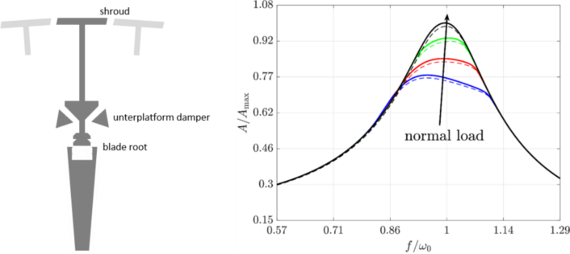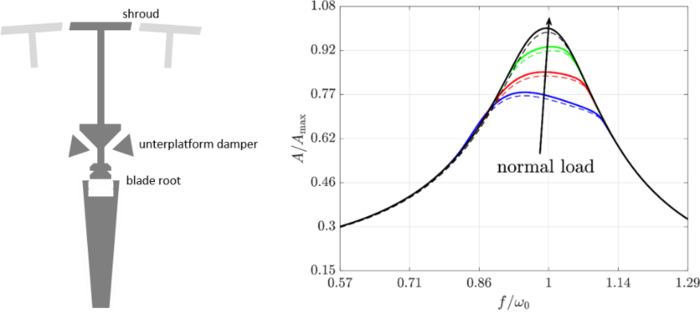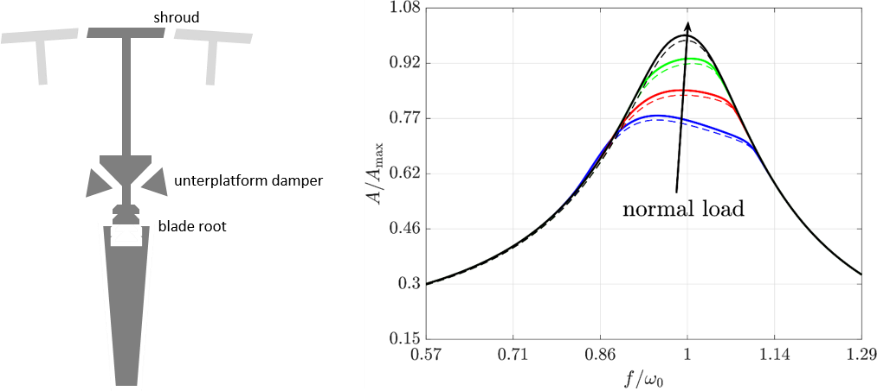Blade vibration under consideration of variable excitations and geometric mistuning
| Led by: | Lars Panning-von Scheidt |
| E-Mail: | xiao@ids.uni-hannover.de |
| Team: | Yue Xiao (Dynamik rotierender Maschinen) |
| Year: | 2023 |
| Funding: | BMWK/AiF |
| Duration: | 01.08.2021-31.03.2023 |
Project description






The rotating blades count as thermomechanically the most heavily stressed components in a turbomachine, thus the prediction of their vibration behaviours is of great importance. In real operation, the mistuning effects lead to different vibration levels of all blades in a stage, whereby individual blades are stressed more than others. The reasons of mistuning are the varying structural properties of blades due to manufacturing tolerances, material inhomogeneities , mechanical wear during operation and variable excitation on blades.
In current numerical simulation, the blade mistuning is modeled by varying their natural frequencies (frequency mistuning) without considering the physical background. In this project, the frequency mistuning is linked to the variance of the measured blade geometries, which are represented by geometric variables (see Figure 1).
The excitation variability can be explained by the so-called Tyler-Sofrin modes (TSMs), which depict a rotating acoustic pressure field. The TSMs consist of several frequency components as well as different spatial periodicities und lead to non-identical excitation of blades. The stationary response regarding to nonlinearly coupled blades is calculated by multiharmonc balancing method (MHBM). The nonlinear phenomena considered in this project are e.g. friction at different contacts like blade root, underplatform or shroud (see Figure 2 left). The friction damping is applied to reduce blade responses (see Figure 2 right).


